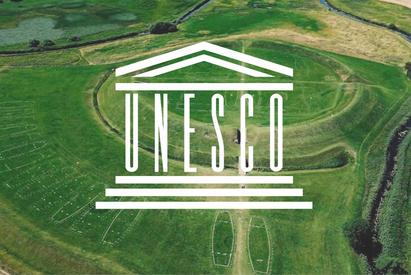The Viking fortress Trelleborg has been added to UNESCO's World Heritage List

On Sunday, September 17, 2023, the Viking fortress Trelleborg and the Denmark's four other ring fortresses - Borgring, Nonnebakken, Fyrkat, and Aggersborg - were added to UNESCO's World Heritage List. This inclusion took place at the annual World Heritage Committee Congress in 2023, held in the Saudi Arabian capital, Riyadh.
It marks a significant milestone in our cultural heritage history. The five ring fortresses have been recognized as outstanding examples of Denmark's rich history and represent an important step towards preserving our unique past for future generations and telling the story of the Viking era. Moreover, the UNESCO World Heritage designation is a seal of approval for a new and strong collaboration among five museums across Denmark.
Viking-Age Ring Fortresses
The five Danish ring fortresses—Aggersborg, Fyrkat, Nonnebakken, Borgring, and Trelleborg—are now included in UNESCO's World Heritage List. These fortresses have been recognized as cultural heritage sites of unique universal significance, which are vital to the world’s heritage, making them worthy of this prestigious inclusion.
The fortresses were constructed between AD 970 and 980 during the reign of Harald Bluetooth, as a testament to the king's power. They all share a common narrative, reflecting Harald Bluetooth's ambitions to unify the Danish realm and strengthen the kingdom in response to pressure from the German-Roman Emperor Otto II.
Their inclusion on the World Heritage List is a significant acknowledgment of the fortresses' importance in world history. It also holds considerable value locally for the respective municipalities and for Denmark as a nation with a rich Viking heritage.
The application for their inclusion on the UNESCO World Heritage List was submitted in January 2021. The fortresses were officially accepted into the list in September, 2024, in Riyadh, Saudi Arabia.
Enhancing Outreach and Research
Being designated as a World Heritage site is seen by the directors of the five museums as a stepping stone to optimize outreach at each fortress. This will be achieved through a unified narrative, thereby enhancing the experience for individual visitors.
The municipalities where the fortresses are located and the museums responsible for their operation and maintenance are now embarking on a development effort to enhance outreach. The goal is to create an even more comprehensive and attractive product for tourists and other visitors at each of the five ring fortresses.
Greater Collaboration Ahead
The entire process of jointly applying for World Heritage status has demonstrated that there is a solid foundation for a fruitful collaboration among the fortresses. This is crucial in efforts to improve the visitor experience and attract more visitors to all five sites. Each fortress has its distinct characteristics, but research, outreach, and maintenance are some of the aspects that need to be coordinated collectively in the future. This contributes to ensuring the knowledge-based experience offered to the public.
To coordinate the collaboration among the five museums, National Museum has been unanimously chosen, as it possesses the high-level expertise required for this key role.
About UNESCO and ICOMOS
The most valuable parts of the world's cultural and natural heritage are included in the World Heritage List, administered by the United Nations' educational, scientific, and cultural organization, UNESCO. ICOMOS is a global organization whose members work professionally to preserve cultural and natural heritage related to buildings, historic cities, cultural landscapes, and archaeological monuments. ICOMOS serves as UNESCO's expert body in matters related to the preservation of cultural environments in connection with the World Heritage Convention.
World Heritage in Denmark
Denmark now has eleven items on the UNESCO's World Heritage List. These include the Five Ring Fortresses, Roskilde Cathedral, the Jelling Monuments, Kronborg, Stevns Klint, the Wadden Sea, Christiansfeld, the Parforce Hunting Landscapes in North Zealand, and in Greenland, Ilulissat, Kujataa, and Aasivissuit - Nipisat.